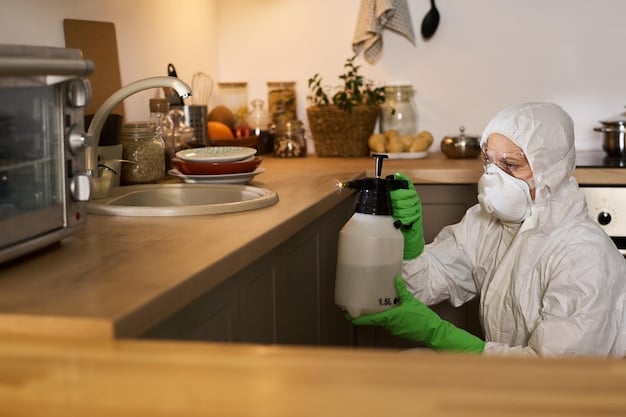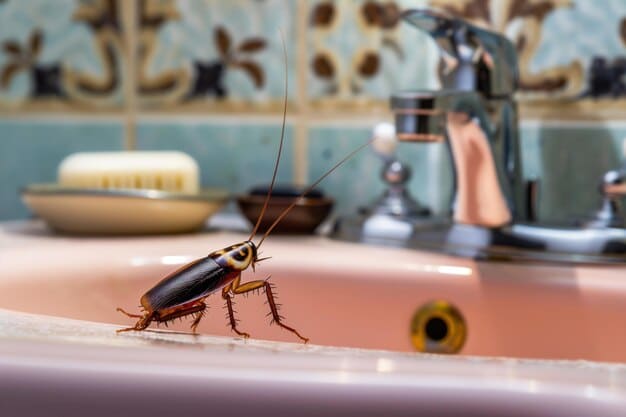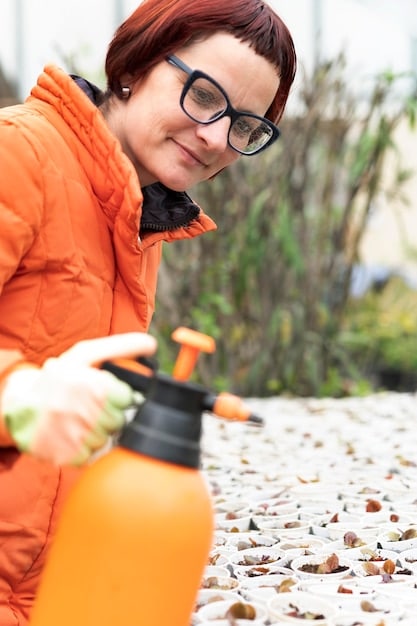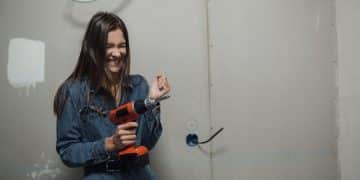DIY Pest Control: Natural Methods to Save $150+ on Exterminators

DIY pest control offers effective and natural solutions to eliminate pests while helping you save over $150 on exterminator costs by utilizing household ingredients and preventative measures.
Dealing with pests in your home can be frustrating and expensive. Calling an exterminator is often the go-to solution, but the costs can quickly add up. The good news is that DIY pest control methods can be highly effective, helping you get rid of unwanted guests naturally and potentially save over $150 on exterminator bills. This guide will walk you through proven strategies to tackle common pest problems using ingredients you likely already have at home.
Identify Common Household Pests
Before diving into DIY solutions, it is crucial to identify the specific pests you are dealing with. Different pests require different treatment methods, so knowing your enemy is half the battle. Identifying the pest allows you to implement targeted and effective control measures.
Common Pests and Their Signs
Several pests commonly invade households, each leaving distinct signs of their presence.
- Ants: Often seen marching in lines, ants are attracted to food and sugary substances. You may also find ant nests near food sources.
- Cockroaches: These nocturnal creatures prefer dark, damp places and leave behind droppings and a musty odor.
- Spiders: While some spiders are harmless, others can be venomous. Cobwebs are a common sign of spider activity.
- Rodents: Mice and rats leave behind droppings, gnaw marks, and may be heard scurrying around at night.

Identifying these signs early can help you take quick action before the infestation worsens. Knowing the type of pest allows you to select the most effective DIY methods, saving time and resources.
Natural DIY Pest Control Solutions
Many natural ingredients can be used to effectively control pests without the harmful chemicals found in commercial pesticides. These DIY solutions are often safer for your family and pets, and they can be more cost-effective.
Vinegar as a Pest Deterrent
Vinegar, particularly white vinegar, is a versatile ingredient that can repel many common pests.
To use vinegar as a pest deterrent, mix equal parts of vinegar and water in a spray bottle. Spray this solution around areas where pests are likely to enter, such as windowsills, doorways, and along baseboards. Vinegar’s strong odor disrupts pests’ scent trails, making it harder for them to navigate and find food sources.
Essential Oils for Pest Repulsion
Certain essential oils have natural insect-repelling properties.
- Peppermint Oil: Effective against ants, spiders, and rodents. Place cotton balls soaked in peppermint oil in areas where these pests are common.
- Tea Tree Oil: Repels insects and can be used to clean surfaces to deter pests. Mix a few drops with water in a spray bottle.
- Eucalyptus Oil: Deters many flying insects and can be used in diffusers or sprays.
These essential oils provide a natural and fragrant alternative to chemical repellents. Regular application can help keep pests at bay.

Effective Home Remedies
Besides vinegar and essential oils, several other home remedies can help you control pests. These remedies use common household items to create effective traps and deterrents.
Boric Acid for Roach Control
Boric acid is a natural mineral that is toxic to insects. It is particularly effective against cockroaches.
To use boric acid, sprinkle a thin layer in areas where cockroaches are likely to travel, such as behind appliances, under sinks, and in cracks and crevices. Boric acid works by dehydrating the roaches and disrupting their digestive system. Be cautious when using boric acid, as it can be harmful if ingested by pets or children.
Diatomaceous Earth (DE)
Diatomaceous earth is a powder made from fossilized diatoms. It is safe for humans and pets but deadly to insects.
DE works by damaging the exoskeletons of insects, causing them to dehydrate and die. Sprinkle DE in areas where pests are present, such as gardens, along baseboards, and in cracks and crevices. DE is particularly effective against crawling insects like ants, fleas, and bed bugs.
Preventative Measures to Avoid Pest Infestations
The best way to control pests is to prevent them from entering your home in the first place. Implementing preventative measures can save you time, money, and frustration in the long run.
Sealing Entry Points
Pests often enter homes through cracks, gaps, and openings around doors, windows, and pipes.
Regularly inspect your home for these entry points and seal them with caulk, weather stripping, or expanding foam. Pay close attention to areas where pipes enter the house and around the foundation. Sealing these entry points makes it much harder for pests to get inside.
Proper Food Storage
Many pests are attracted to food sources in your home. Improper food storage can create an inviting environment for ants, cockroaches, and rodents.
- Store food in airtight containers to prevent pests from accessing it.
- Clean up spills and crumbs immediately.
- Regularly empty and clean garbage cans.
By eliminating food sources, you reduce the likelihood of pests being attracted to your home.
Maintaining a Clean Home Environment
A clean home is less attractive to pests. Regular cleaning and maintenance can help prevent infestations and make your DIY pest control efforts more effective.
Regular Cleaning Habits
Consistent cleaning helps eliminate food sources and breeding grounds for pests.
Vacuum floors regularly to remove crumbs, dust, and pet hair. Wipe down countertops and surfaces to remove spills and food residue. Sweep or mop floors to keep them clean and free of debris. Regular cleaning makes your home less appealing to pests.
Decluttering Your Home
Clutter provides hiding places for pests and makes it harder to detect infestations early.
Remove unnecessary items from your home, such as old newspapers, magazines, and cardboard boxes. Store items in plastic containers to prevent pests from nesting in them. Decluttering reduces the number of hiding spots and makes pests easier to spot.
When to Call a Professional Exterminator
While DIY pest control methods can be effective, there are times when professional help is necessary. Recognizing when to call an exterminator can prevent a small problem from becoming a major infestation.
Signs of a Major Infestation
If you notice signs of a large-scale infestation, it’s time to call a professional.
These signs include:
- Large numbers of pests despite your DIY efforts.
- Signs of structural damage caused by pests, such as gnaw marks or holes in walls.
- Persistent pest activity that doesn’t respond to treatment.
Major infestations often require specialized equipment and treatments that are not available to the average homeowner.
Benefits of Professional Pest Control
Hiring a professional exterminator offers several benefits.
Professionals have the expertise to accurately identify pests, assess the extent of the infestation, and develop a customized treatment plan. They also have access to professional-grade pesticides and equipment that are more effective than DIY solutions. Additionally, professionals can provide ongoing maintenance and prevention services to keep pests from returning.
| Key Point | Brief Description |
|---|---|
| 🔍 Identify Pests | Recognize the type of pest to apply targeted solutions. |
| 🌿 Natural Solutions | Use vinegar, essential oils, and DE for safe pest control. |
| 🚪 Seal Entry Points | Prevent pests by sealing cracks and gaps in your home. |
| 🧹 Cleanliness | Maintain a clean environment to deter pests. |
FAQ
▼
Start by identifying the type of pest and sealing any entry points in your home. Clean thoroughly to remove potential food sources, making your home less attractive to pests.
▼
Vinegar is quite effective as a deterrent. Mixing equal parts vinegar and water in a spray bottle and applying it to entry points can disrupt pests’ scent trails and repel them.
▼
Some essential oils can be harmful to pets. Always research and dilute essential oils properly before using them around pets. Avoid using oils like tea tree oil around cats.
▼
Frequency depends on the severity of the infestation and the solution used. Generally, apply solutions weekly or bi-weekly, and after cleaning, to maintain effectiveness. Monitor the pest activity and adjust as needed.
▼
If DIY methods are not effective, or if you notice signs of a major infestation, it’s best to call a professional. Structural damage caused by pests also warrants professional intervention.
Conclusion
By implementing these DIY pest control methods, you can effectively manage and prevent pest infestations in your home while saving money on exterminator costs. From using natural repellents like vinegar and essential oils to adopting preventative measures such as sealing entry points and maintaining a clean environment, these strategies empower you to take control of your pest problems. Remember to identify pests correctly and act promptly, and you can enjoy a pest-free home without breaking the bank.





